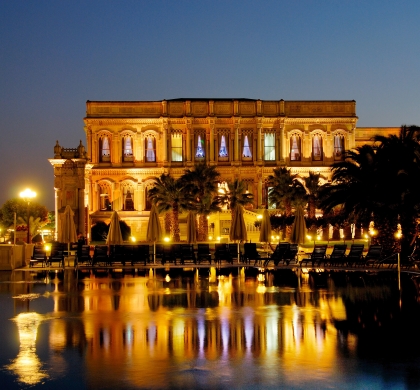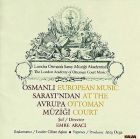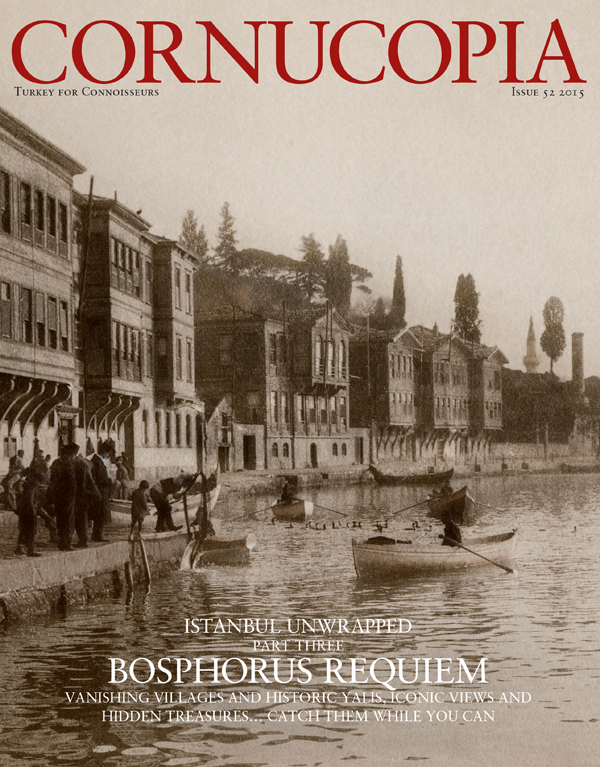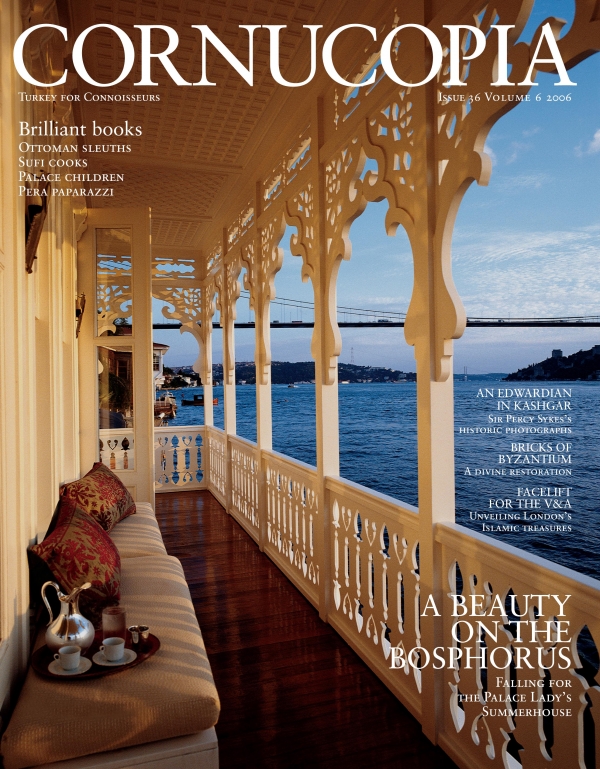Buy or gift a stand-alone digital subscription and get unlimited access to dozens of back issues for just £18.99 / $18.99 a year.
Please register at www.exacteditions.com/digital/cornucopia with your subscriber account number or contact subscriptions@cornucopia.net
Buy a digital subscription Go to the Digital EditionHer life is the stuff of fairy tales. Omar Khalidi tells the story of the princess who captivated Cecil Beaton
The Caliph, Amir al-Muminin, Successor to the Prophet Muhammad, Commander of the Faithful, The Shadow of God on Earth – these exalted titles convey the symbolic importance of the caliphate to the community of Islam. In theory, the caliph – a position held from the sixteenth century by the sultan – was both the spiritual and temporal leader of the Sunni Muslims, ensuring the defence and expansion of the rule of divine justice on earth and helping to assure eternal salvation for all Muslims.
After the First World War, however, these titles were about all that remained of the glory of the Islamic caliphate. The Ottoman Empire was finally defeated and dismembered and revolutionary forces were unleashed in Turkey. On November 1, 1922, under the leadership of Mustafa Kemal (who later took the name of Atatürk), the newly formed Turkish Grand National Assembly abolished the sultanate, and the last sultan, Murad VI Vahdeddin, fled from Istanbul aboard a British battleship.
A little over two weeks later, Mustafa Kemal offered the position of caliph to Abdülmecid Efendi, the third son of an earlier sultan, Abdülaziz, and previously heir to the throne. The new Caliph was installed on Friday, November 24, 1922, in a ceremony held in Topkapı Palace. He attended Friday prayers at the Fatih mosque, after which he paid a visit to the shrine of Eyüb Ensari, before returning to take up residence in Dolmabahçe Palace on the European shore of Istanbul, which was then still the capital.
Abdülmecid Efendi was a cultured man who spoke Turkish, Arabic, French and German, and called France a second fatherland. He had spent his seclusion (kafes) composing classical music, reading the complete works of Victor Hugo and the latest numbers of Revue des Deux Mondes and cultivating his park. Like other educated Ottomans of his day, he painted in a modern Parisian style, mainly peyzaj (landscapes) and scenes from Ottoman history.
At once cosmopolitan and patriotic, Abdülmecid Efendi encouraged the revival of Turkish culture. His earlier house was in the neo-Turkish style, with wide eaves, brightly painted walls and fireplaces lined with Kütahya tiles; he himself designed the neo-Seljuk gate. He held gatherings of Turkish writers and musicians, and put on plays in his garden. He had two children, Prince Ömer Faruk Efendi and Princess Dürrüşehvar.
After the abolition of the sultanate, there were fears for the future of the caliphate. On November 24, 1923, as rumours spread through the Muslim world that this was about to happen, the Aga Khan and Sayyid Amir Ali, a renowned scholar, wrote to the Grand National Assembly voicing their concerns. They were expressing the deep commitment of Indian Muslims – the largest body of Muslims in the world – to the caliphate as an institution. But their letter gave Mustafa Kemal a pretext to denounce the move as foreign intervention. The Caliph had been in office barely four months when the caliphate was abolished by the assembly, on March 3, 1924 in Ankara, the new capital.
Dolmabahçe was surrounded by troops. Abdülmecid Efendi was reading the Koran (or by some accounts the essays of Montaigne) late at night when Adnan Adıvar, Mustafa Kemal’s representative, and the prefect of police came to tell him that he had to leave at dawn. His family and servants began to weep. The freedom of life in the West was offered as consolation. The Caliph’s daughter, Dürrüşehvar, sole survivor of this melancholy scene, is said to have remarked in tears: “I do not want that kind of freedom.” The Caliph took his immediate family, three officials and two servants into exile in Europe aboard the Orient Express. They settled in Paris and Nice.
At this critical time, financial help came from Mir Osman Ali Khan, the Nizam of Hyderabad, said to be the wealthiest man in the world. According to Sir William Barton, the British Resident at the Nizam’s court, the Caliph “received a pension of £4,000 a year from the Nizam’s government: other members of the Turkish royal family also enjoy his bounty”. Before the Nizam could make good on his promise of the pension, the British government in India wanted to know whether it had been offered because of the Nizam’s desire to revive the caliphate or continue it in some other form, or whether it was merely an act of charity. Reassured that it was the latter, the British consented to the Nizam’s benevolence. Somewhat relieved of financial worries, the Caliph “attended Friday prayers and enjoyed classical concerts” in Paris. He was rarely in the news, but he was spotted in Nice by the correspondent of Time magazine, who was writing a story about the Nizam’s silver jubilee: “Almost any sunny day he may be seen strolling with a mien of great dignity along the beach near Nice, attired in swimming trunks only, carrying a large parasol. ‘I live apart from worldly vanities here in Nice,’ recently observed the Caliph, whose favourite reading is Anatole France. ‘I read,
I play the piano, I paint. Nice is perhaps the only foreign city which is popular with the Turkish people.’”
Like any father in Islamic society, the Caliph’s main worry was to find a suitable match for his beautiful and talented daughter, Princess Dürrüşehvar. His rescuer in this matter was the same man who had solved the Caliph’s financial worries, the Nizam.
In Nice, on November 12, 1931, a double wedding took place. Princess Dürrüşehvar was married to Azam Jah, Prince of Berar and heir apparent to the throne of Hyderabad; and her cousin, Princess Nilüfer, great-granddaughter of Sultan Murad V, married Muazzam Jah, the second prince of Hyderabad.
“The wedding ceremony was not attended with any of that oriental splendour which is supposed to be inseparable from royal marriages,” noted the author of Pictorial Hyderabad.
Though Turkish truffles resemble their more famous European cousins in appearance, their fragrance – mellow and delicately fruity – is far milder.
More cookery features
Is this fantastic landscape about to become the new hotspot for wine-lovers? In Cornucopia 31 Kevin Gould heads for the oldest vineyards on earth to find out. Photographs by Frits Meyst
Born into penury, he rose to be revered across Europe. Yet the Ottoman Empire’s youngest ever grand vizier is all but forgotten at home. David Barchard charts the dramatic career of the master strategist Âli Pasha
When spring arrives in the high passes of the Taurus Mountains, a dazzling display of flowers comes out to greet it. Story and photographs by Martyn Rix.
SPECIAL OFFER: order three beautiful garden-themed issues, including this one, for only £60. List price £102
Xinjiang, formerly known as Chinese Turkestan, is home to some ten million people of Turkic descent. Their culture, language and religious beliefs still owe more to central Asia and the northern steppes than they do to China itself. As distant from the China Sea as it is from the Mediterranean, Xinjiang is a place of wild terrain and extreme climate, surrounded by high mountain ranges. By Christian Tyler


The London Academy of Ottoman Court Music, with Emre Aracı. Produced by Ates Orga,



Cornucopia works in partnership with the digital publishing platform Exact Editions to offer individual and institutional subscribers unlimited access to a searchable archive of fascinating back issues and every newly published issue. The digital edition of Cornucopia is available cross-platform on web, iOS and Android and offers a comprehensive search function, allowing the title’s cultural content to be delved into at the touch of a button.
Digital Subscription: £18.99 / $18.99 (1 year)
Subscribe now